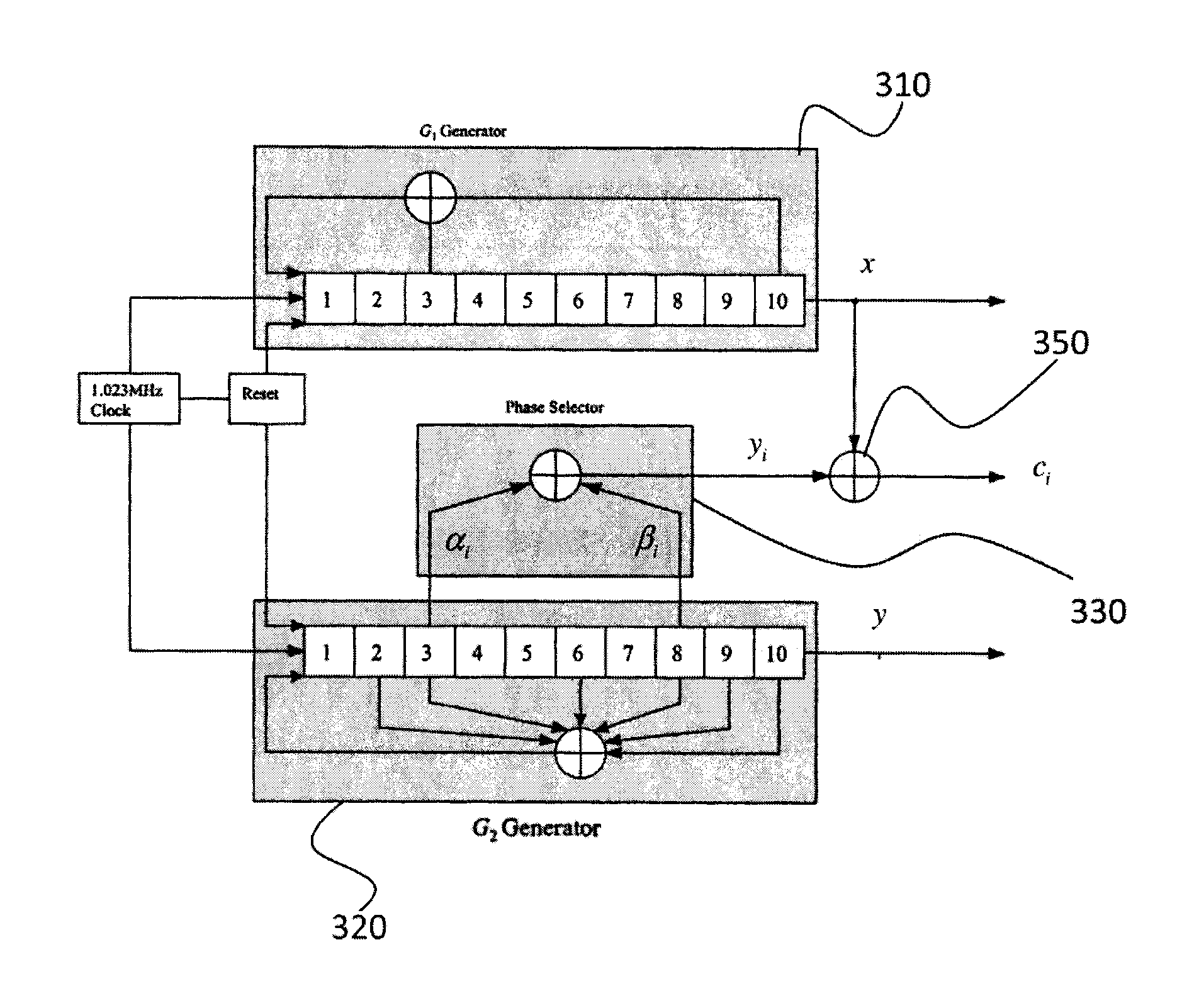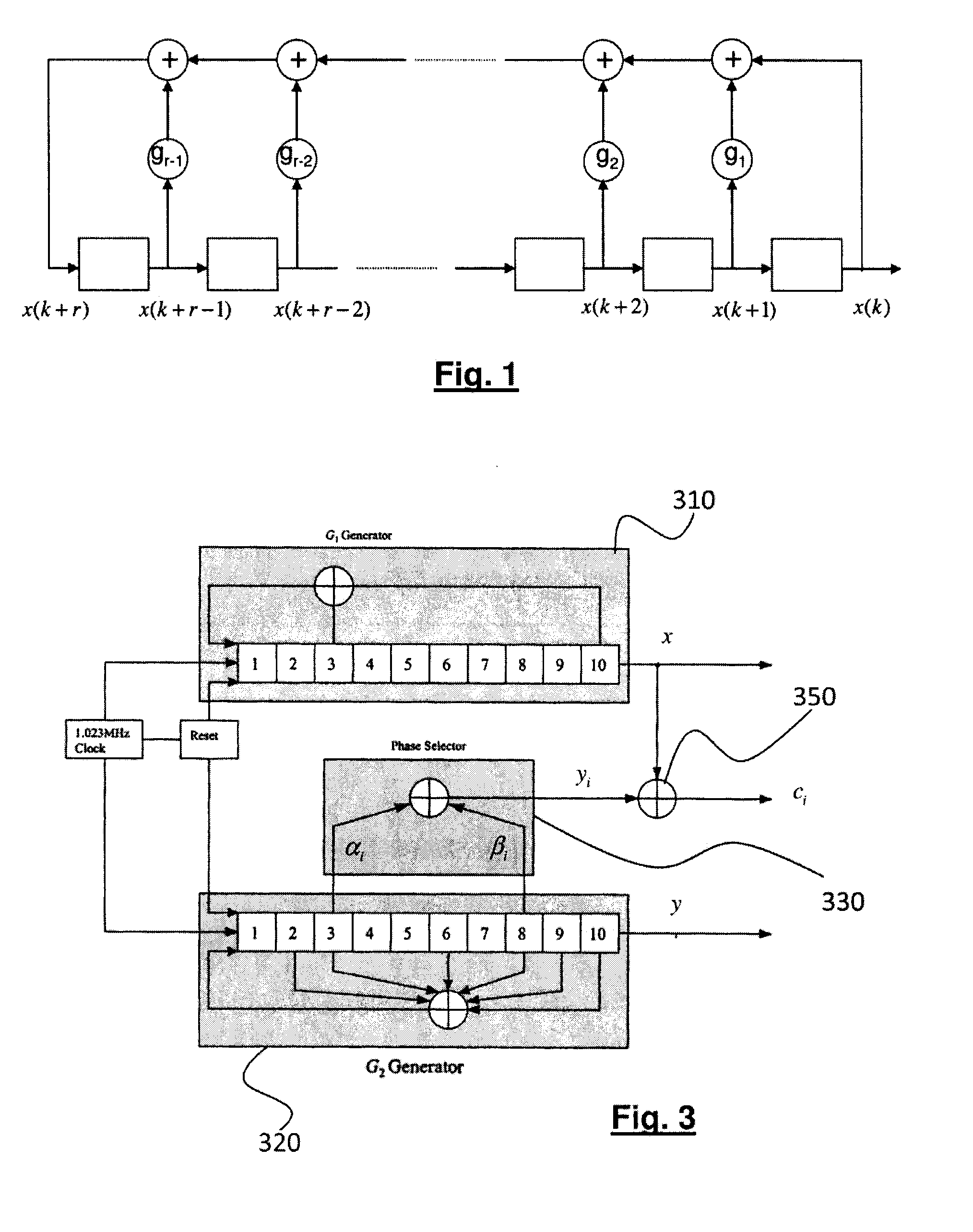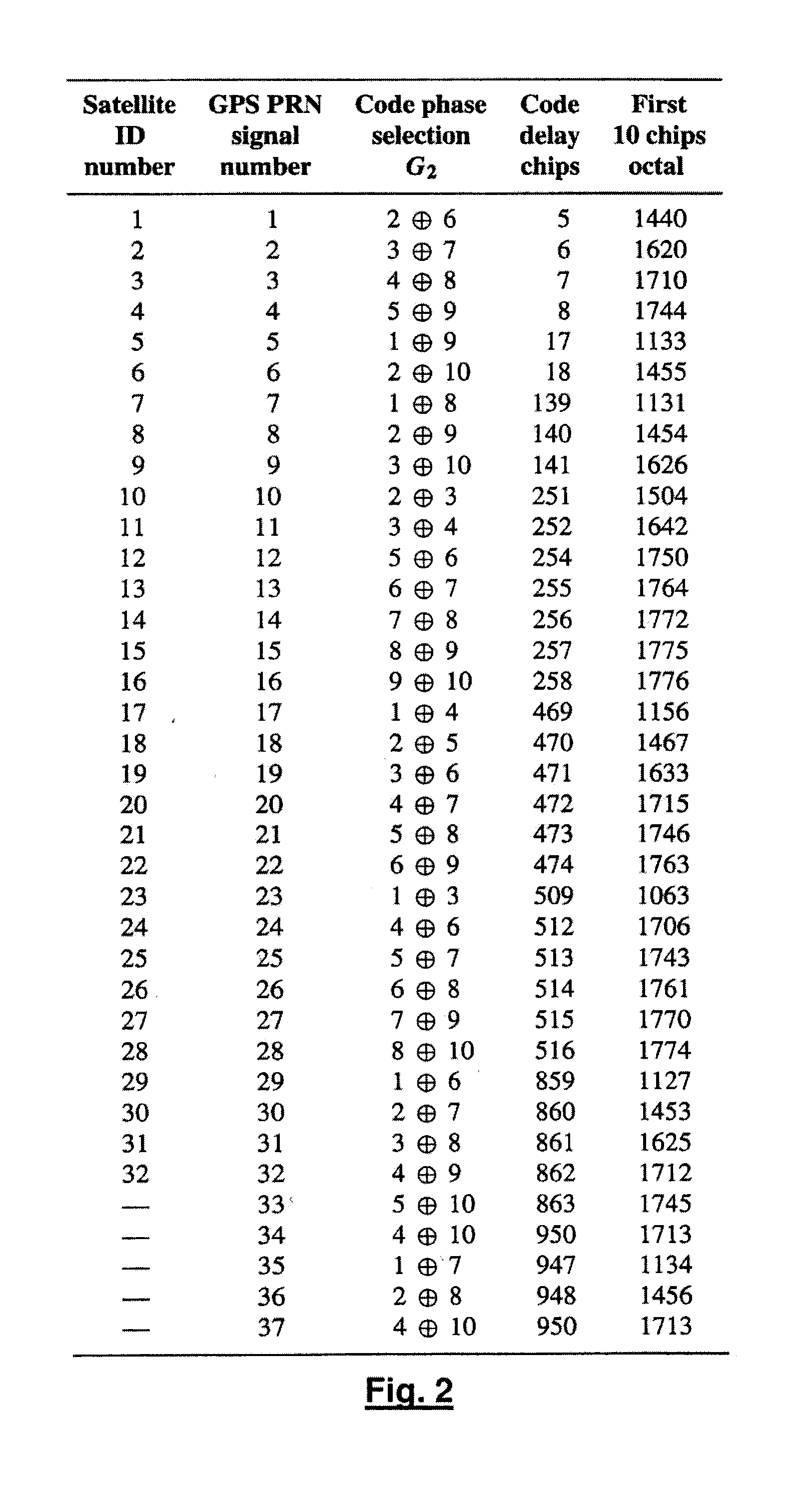Method for acquiring a gold sequence by double iterative decoding
a technology of decoding and gold sequences, applied in the field of decoding, can solve the problems of inability to obtain a sufficiently low missed detection probability and false alarm probability level, and the method is relatively complex
- Summary
- Abstract
- Description
- Claims
- Application Information
AI Technical Summary
Benefits of technology
Problems solved by technology
Method used
Image
Examples
Embodiment Construction
[0026]It is reminded that a signal emitted by a satellite of a positioning system as the GPS system or Galileo system is obtained by spectrally spreading a navigation message, the spreading code being specific to the satellite in question. Each symbol of the message lasts a plurality of repetition periods of the spreading code. Thus, for the GPS system, each symbol lasts 20ms, that is 20 repetition periods of the spreading code, the chip rate being 1,023 MHz.
[0027]The spreading sequences ci of the different satellites i=1, . . . , 1 are Gold sequences, each Gold sequence being built from a sum of two sequences having a maximum length, also called M-sequences. It is reminded that an M-sequence is a periodical series of values which is produced by a linear feedback shift register (LFSR) which explores all the values that can be produced by the shift register. Any linear combination of two M-sequences having the same degree r (that is generated by generator polynomials having the same ...
PUM
 Login to View More
Login to View More Abstract
Description
Claims
Application Information
 Login to View More
Login to View More - R&D
- Intellectual Property
- Life Sciences
- Materials
- Tech Scout
- Unparalleled Data Quality
- Higher Quality Content
- 60% Fewer Hallucinations
Browse by: Latest US Patents, China's latest patents, Technical Efficacy Thesaurus, Application Domain, Technology Topic, Popular Technical Reports.
© 2025 PatSnap. All rights reserved.Legal|Privacy policy|Modern Slavery Act Transparency Statement|Sitemap|About US| Contact US: help@patsnap.com



